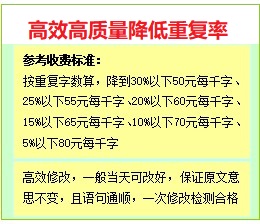|
论文编号:YY228 字数:7173.页数:25 ABSTRACT This paper is concerned with the training methods of short-term memory in consecutive interpreting. According to Effort Model from Daniel Gile, the short-term memory is an essential part in the process of interpreting. So, a good short-term memory is able to help interpreter improve the quality of interpreting.
交替传译中短时记忆的训练方法
ABSTRACT I
|
|
| |
| 上一篇:广告英语的语言特点和翻译策略 | 下一篇:英汉动物词汇的文化比较研究 |
| 推荐论文 | 本专业最新论文 |
| Tags:交替 传译 短时 记忆 训练 方法 | 2010-07-17 21:47:46【返回顶部】 |




